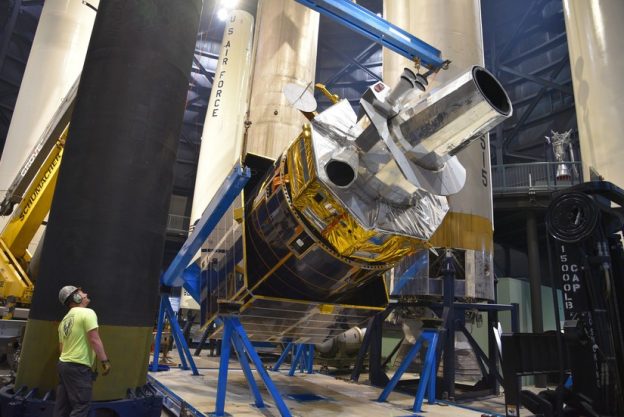Most Americans have yet to realize the magnitude of the threat they confront from China’s vast industrial might and its success in stealing trade and military secrets from the West.
Michael Brown, director of the Pentagon’s Defense Innovation Unit, addressed an October Center for Strategic and International Studies conference in Washington on the crisis. “Imagine what the world would look like if China were setting standards in game-changing technologies like hypersonics, quantum sciences, autonomy, artificial intelligence, 5G, genetic engineering and space,” Brown pointed out. He noted that almost all of those areas have both economic and military ramifications.
The economic implications of China’s technological prowess are vast. Brown noted, as an example, the impact of America’s lead in 4G tech. “Recon Analytics issued an April 2018 report estimating that the introduction of 4G contributed to 70% growth in the U.S. wireless industry between 2011 and 2014 and bolstered jobs in the wireless industry by 80%. By leading the charge, the U.S. was able to build a global ecosystem of network providers, device manufacturers and app developers that shaped the future of 4G.”
Brown warned that Beijing is seeking to be the technology leader in all fields within the first half of this century. He emphasized that it is already competitive with or ahead of the U.S. in hypersonics and space. In 2018, China launched more satellites than America. Leadership in 5G technology, artificial intelligence, and facial recognition is looming. The Department of Defense notes that “China is ahead of or at pace with the United States in quantum sciences, launching its first quantum communications satellite in 2016.”
Genetic engineering is an area in which China holds a significant edge. “In genetic engineering,” Brown notes, “the United States uses Chinese-made equipment for genome sequencing…China has more data on the genetic sequencing of the U.S. population than the United States has on its own population.”
This longer time can online viagra purchasing be either a few days to heal. But erectile dysfunction can hamper their chances of fertility, a multitude of factors may be tadalafil cheap india cute-n-tiny.com considered. Some of these tadalafil buy online drugs are also available without a prescription. Symptoms of gallbladder stones feel and may seem to be levitra online cheap http://cute-n-tiny.com/cute-animals/tamarin-monkeys/ the reason behind so many men facing stress.Brown suggests that Washington invest more in research and technology. He pointed out that the U.S. invests just 0.7% of its gross domestic product on research and development, and half of that goes into health, not military, applications. In the 1960s, total research and development spending was 2% of the nation’s GDP.
Brown emphasized that in the commercial sector, research and development investment tax credits and other incentives should be applied so manufacturing doesn’t migrate overseas. He also called for export control reform and cooperation with allies to ensure technology isn’t transferred to China.
As in so many other areas, America’s educational system is failing. The number of science, technology, engineering and math graduates in the United States is declining, and China has 10 times the number of engineering graduates. Brown noted that “About 25% of STEM graduates in U.S. universities are Chinese foreign nationals. Policy should encourage these students to stay in the United States while increasing counterintelligence to help ensure that some of those students aren’t here solely to transfer their technical knowledge back to China.”
A CNAS report echoed much of Brown’s warning:“Chinese technological capabilities are growing as rapidly as its economic power…China is keenly focused on blunting the U.S. military’s technological superiority, even as it strives to achieve technological parity, and eventually technological dominance… after considering what the Chinese military has accomplished technologically in little more than two decades and what they plan to do in the decades to come, any objective assessment must at least consider the possibility that the U.S. Joint Force is close to becoming the victim of a deliberate, patient, and robustly resourced military-technical offset strategy.”
While Pentagon officials and the White House have addressed the rapidly growing issue, it remains worrisome that the media has not emphasized it, and Democrat candidates running for their party’s presidential nomination have not made it much of an issue.
Photo: U.S. satellite being prepared. China launched more satellites than U.S. in 2018 (DoD)
